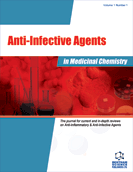Abstract
The formation and spread of infections by multi-resistant bacteria is favoured by the absence of hygienic measures to prevent the spread in hospital settings as well as the frequent use of antibiotics. Overall, approximately 20% of Staphylococcus aureus isolates in Europe are reported as methicillin resistant and cause serious nosocomial infections. Therefore, the worldwide rise in antibiotic resistance in clinical practise has led to the search for alternative methods of selectively destroying pathogens without harming the host tissue. One “new” approach to treat microbial infections uses light in combination with a photosensitizer to induce a phototoxic reaction by reactive oxygen species similar as in photodynamic therapy of skin cancer. In particular, different classes of molecules including porphyrins, phthalocyanines, phenothiazine and fullerenes have demonstrated antimicrobial efficacy against a broad spectrum of multi-resistant bacteria upon irradiation with visible light. Another “new” approach is called bacteriophage therapy, which involves using phages or their products as bioactive agents for the prophylaxis and/or treatment of bacterial infectious diseases. Phages were used topically, orally or systemically and have demonstrated efficacy against Gram (-) bacteria, whereas purified phageencoded agents are also effective against Gram (+) bacteria.
Keywords: Antibacterial, phototoxicity, photosensitizer, phages, bacteriophage-conjugated photosensitizer
 7
7





















